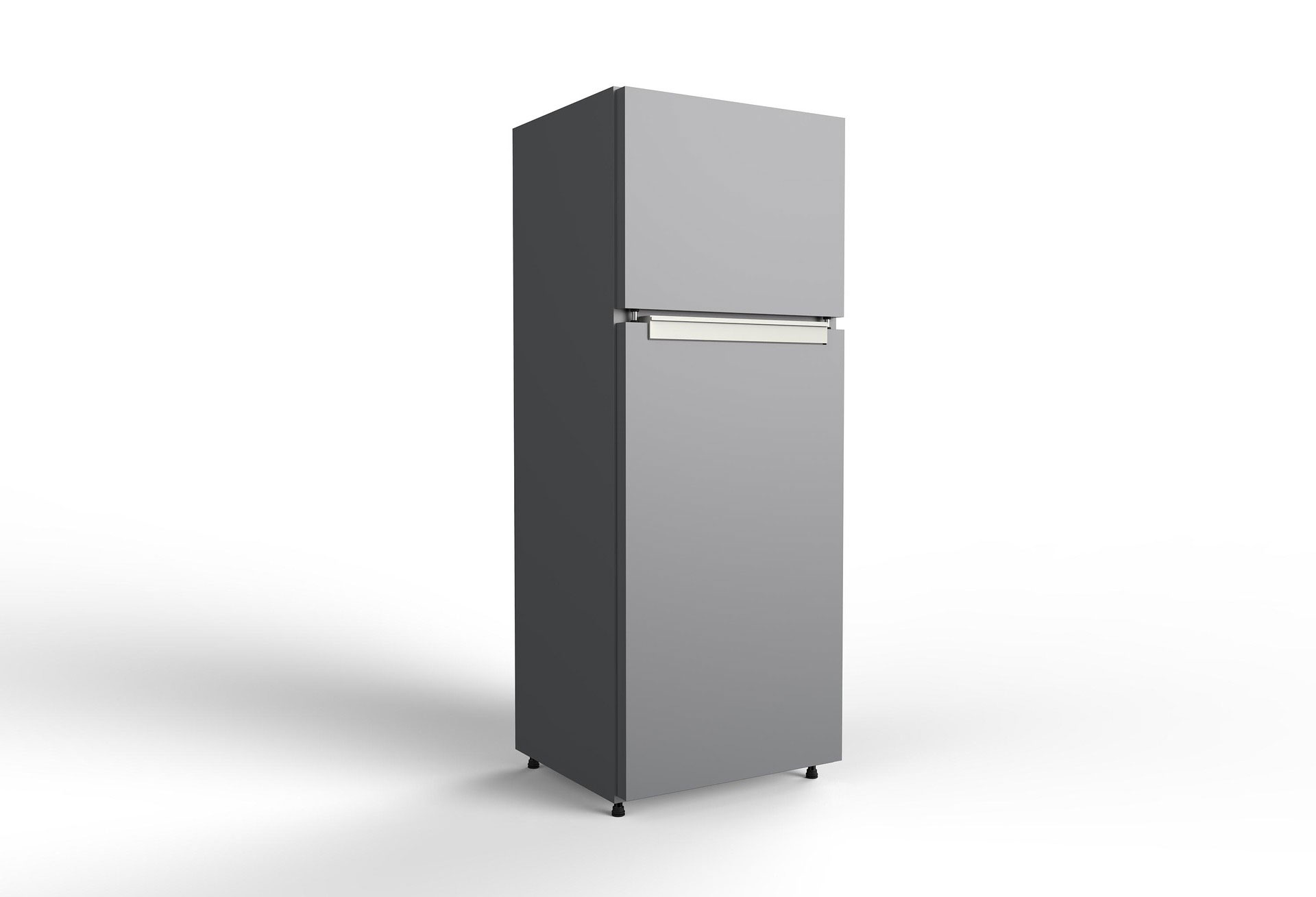Refrigerators are typically transported upright, but due to certain circumstances, there may be no other choice but to lay a refrigerator on its side during transport. I’ve heard a lot of questions about this throughout my time working in the home appliance industry. Is it safe to do so? Moreover, will it create problems for your fridge later on?
Fortunately, the effects of laying your fridge on its side will only be temporary. Transporting your refrigerator this way is safe as long as you let your fridge rest upright for at least 4 hours (24 hours at most) before turning it on.
In this article, I will discuss what happens when you lay your refrigerator on its side and what to do before turning it on.
Warning: if you plan on not reading the proceeding parts of this article (though we highly suggest that you read through it!), take note that some of the bigger refrigerator models (e.g. French Door, Side-by-Side, Bottom Freezers, and Built-in Refrigerators) should not be laid on their side at all times due to their weight.
How a refrigerator works
Refrigerators work by continuously evaporating and condensing a refrigerant gas to produce a cooling effect inside the compartment. They do this with the help of a compressor that pumps the refrigerant gas to the refrigerator’s coils.
To help this operation run smoothly, refrigerators have specially formulated oils that lubricate and cool the compressor. This oil is what causes issues to the refrigerator when you lay it on its side.
What happens to a refrigerator when you lay it on its side
When the fridge is laid sideways, the oil can run off from the compressor and make its way up to the cooling coils. Since the oil is thick and viscous, it can easily clog up the coils and may prevent the refrigerant gas from flowing through them and thus causing cooling issues for your refrigerator.
Apart from that, if the compressor runs with an improper amount of lubricating oil, it can cause overheating and eventually break down from worn-out parts due to excessive friction.
Moreover, the innards of the refrigerator may get misaligned or dislodged on account of their weight and awkward position. For example, the compressor is supported by brackets that hold it in an upright position. If laid on its side, the brackets may give way as it was not designed to hold the compressor at that angle. The compressor’s internal parts may get dislodged as well. You’ll know something went wrong if loud banging and shuddering sounds are coming from the compressor after you turned it on.
Can a refrigerator be transported on its side?
Ideally, refrigerators should be transported upright to minimize the disturbance of the sealed refrigeration system and to prevent damage to the internal parts.
With that said though, it is generally safe to lay a refrigerator on its side during transport provided that you let it rest upright before turning it on to allow the lubricant oil to flow back down to the compressor.
A good rule of thumb to follow is to let the refrigerator rest upright (and unplugged) for the same amount of time that it was lying on its side. If you laid it on its side for 4 hours, then you should let it rest upright for 4 hours as well.
Do note that not all refrigerators can be laid on their side. Larger models like Side-by-sides, french doors, bottom freezers, and built-in refrigerators should be kept upright at all times on account of their weight as transporting them horizontally may cause dents or misaligned hinges on the side that the fridge was laid on.
If you are unsure, consult with the brand’s representative to give you the best course of action.
Tip: you can compromise by tilting (not fully laying) your refrigerator sideways. This will keep the compressor oils from spilling somewhat and keep the fridge supported by one side of its base.
What to do after you lay a refrigerator on its side
Luckily, the side effects (pardon the pun) of transporting a fridge horizontally are only temporary. Here are the steps to take before turning your refrigerator on after it has been laid on its side.
- Remove the box and set it up in its final position.
- Let it rest upright and keep it unplugged for at least 4 hours (24 at most) to let the oil settle back into the compressor.
- Run it at the max temperature setting for at least 2 hours while it’s empty to let it reach the perfect temperature.
- You can now put food into the refrigerator!
Conclusion
I hope that I’ve answered your questions completely! In summary:
- Yes, it is generally safe to lay your refrigerator on its side when transporting it.
- No, it is not ideal.
- But the adverse side effects can be prevented from happening by letting the compressor oil settle down before turning your refrigerator on.
Please comment down below if you have any more refrigerator-related questions that need answering.
Sources
- removeandreplace.com. (n.d.). Refrigerator laid on side when moving now will not cool properly. Retrieved January 31, 2021, from https://removeandreplace.com/2015/10/30/refrigerator-laid-on-side-when-moving-now-will-not-cool-properly/

Miguel Mores worked for 5 years as a member of the product management team for a home appliance company in the Philippines. He started 101appliance to answer the most common customer questions that he has encountered during his time in the industry. He now works in the digital marketing field and manages a small online bookstore on the side.


So is it OK to lay a fridge on its side during transport and then turning it right side up and letting it rest for 24 hours prior to turning in back on?
Yes, it is ok as long as you let it rest for 24 hours.
Hi, I was told I could transport a french door LG refrigerator on its side. I was told that if it was brand new and never run then it would be okay. This is from Costco a 22 cubic foot French door fridge. Transport was about 15 to 20 minutes and it sat upright for about an hour or so before we installed it. Should we be concerned about any damage?
Hi! Generally, large refrigerators should not be laid on their sides as it may not be able to support their weight. You may see some denting and such. However, if it is properly packaged, handled carefully, and considering its time in transit, I don’t foresee any problems. Hope that helps. 🙂
What if an lg fridge with freezer below was on its side for a few minutes when delivered?’
‘Run it at the max temperature setting for at least 2 hours while it’s empty.”
What’s max temperature setting? warmest?
Are saying maximum temperature setting should be the warmest or coldest ???
Hi! I’m buying a used whirlpool side-by-side for my garage. However, I have to lay it in down in my pick up. Transport would be about 30 mins. Do you think it would be ok?
I have a French doors bottom freezer Electra Lux I need to transport in my truck and 1:45 minutes drive can I lay it down.
I have a stand-up freezer that was laid down for 24 hours before being stood up and accidentally turned it on for about 6 minutes. Do you think this will burn it out?
Thank you very much everything is fine now I appreciate all the help when I read in your instructions thank you
I’m transporting a whirlpool side by side refrigerator for 4 hrs. Laying on It’s side. Will this be a problem, considering the long transport time?
I’m having to buy a new fridge for my RV. I’m buying from Walmart and have to transport by a vehicle like an SUV. Can the fridge lay on its side for any amount of time
Hi but my LG FRIDGE freezer in April because it was a good deal my new kitchen is on bei g fit in September it has been on it side still waiting for kitchen still in its package will it still work when in stalled
We transported Kenmore French door refrigerator for approximately 8 hours and plan to leave it stand (before turning on) at least two (2) days. Should everything be okay? Of course, we’ll do as suggested above and run at maximum for 2 hours before putting any food in. Should that take care of any issues?
My friend bought got a new fridge and when delivered, they had to turn it in it’s side. They did not wait to start it and now it is not working properly after two days.
Can it be remedied at this point by unplugging and resting?
Thanks, Lisa
My friend picked up a Samsung family hub 4 door refrigerator for me that was abandoned so it had been used and not brand new. He had taken all the doors off carefully and layed it on its side. It sat in his van for about 24 hours. He put it in my garage and said it would be fine but to let it sit without putting back together for 48 hours. Do you know if it should be ok? And also what should I look out for regarding …
There is only one consideration when transporting a fridge on its side and that is to ensure that the suction line coming out of the compressor is facing upwards. The suction line is the thicker of the two lines that come from the compressor. (There is a short third line but it is only used when the fridge is first filled with gas.) That line opens directly to the inside of the compressor after it goes through the compressor wall. The thinner line, the discharge line, does not open to the inside. It runs all the way to the middle of the compressor, where no oil can ever enter due to two reed valves.
If the fridge is transported with the suction line facing downwards the oil can run into the line and all the way to the evaporator in the back of the freezer. When the fridge is stood upright that oil does not return to the compressor no matter how long you leave it standing. It runs down to the bottom of the evaporator. When the fridge is restarted the motor quickly overheats from lack of oil and burns out.
Ignore all other advice about how to transport a fridge lying down. The above is the only consideration.
The article is unfortunately not correct. It is totally safe to transport a fridge on its side but only if you transport it on the correct side. After standing it back up there is no need to wait 4 hours. It can be turned back on immediately. For proof see https://www.youtube.com/watch?v=VbcIQqSix1Q